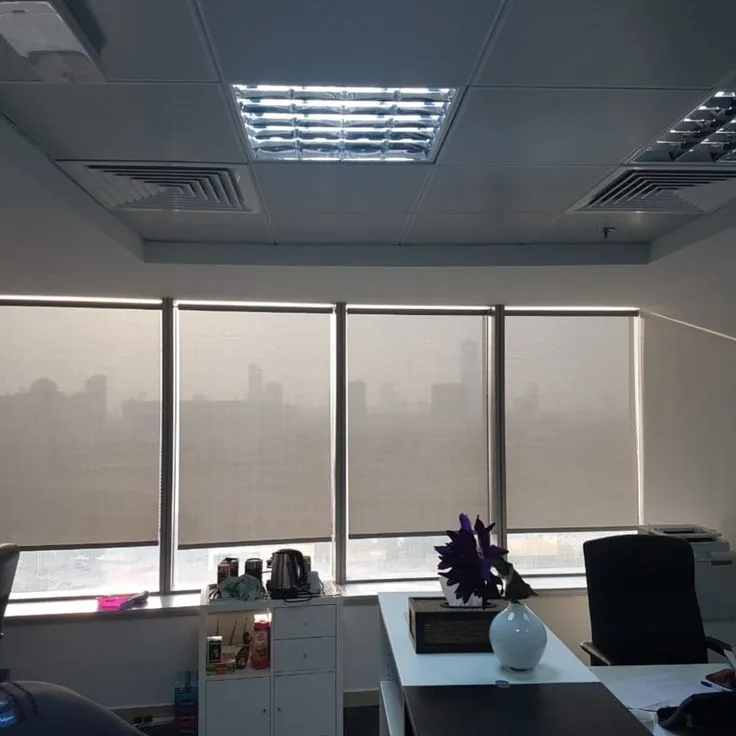Choosing the right window treatment can completely change the look, feel, and function of a room. For many homeowners across the UK, the decision often comes down to finding a balance between style, light control, privacy, and practicality.
Two popular options—Allusion blinds and Venetian blinds—offer very different solutions depending on your space and needs. Understanding the key differences between the two will help you make a more confident and informed choice.
While both offer modern appeal and functionality, the way they operate, look, and perform varies significantly. Let’s explore the main distinctions to help you determine which is the better fit for your home or office.
Appearance and Design Style
Each blind style adds its own character to a room. Here’s what sets them apart in terms of design:
- Allusion blinds are made from vertical fabric vanes that alternate between sheer and opaque panels, creating a soft, elegant drape that flows like curtains.
- Venetian blinds feature horizontal slats, often made from wood, aluminium, or faux wood, giving a more structured and classic appearance.
- Allusion blinds suit contemporary interiors that favour subtle texture and movement, especially in open-plan spaces.
- Venetian blinds work well in both traditional and modern homes and are ideal for achieving a clean, tailored look.
- Allusion blinds typically run full-length, ideal for patio doors or floor-to-ceiling windows, while Venetian blinds are more compact and versatile in smaller spaces.
If your goal is to create a light, airy look with minimal fuss, Allusion blinds provide a softer aesthetic. For something crisp and timeless, Venetians are a great choice.
Light Control and Privacy
Both blinds are designed to help manage light and privacy, but they do so in very different ways:
- Allusion blinds allow light to gently filter through their sheer sections while maintaining daytime privacy.
- You can walk through Allusion blinds even when they’re closed, making them ideal for bi-fold or sliding doors.
- To block light more fully, simply rotate the vanes so the opaque panels overlap.
- Venetian blinds offer excellent control, letting you tilt the slats to direct light exactly where you want it.
- You can adjust Venetians for partial shade, full closure, or full openness, giving you flexibility throughout the day.
If precision light control is a top priority, Venetian blinds give more granular control. But if you want graceful filtering with the option to move through the space, Allusion blinds are the winner.
Operation and Ease of Use
Ease of use is crucial, especially for larger windows or high-traffic areas. Here’s how they differ in operation:
- Allusion blinds are typically operated with a wand or motorised system, smoothly sliding across wide windows or doors.
- You can draw them open like curtains or rotate the fabric vanes for privacy without blocking airflow.
- Venetian blinds use a cord or wand to tilt and raise/lower the slats, and many come with child-safe features as standard in the UK.
- Motorised Venetian options are available, though generally more common with premium installations.
In general, Allusion blinds work best for larger window expanses that need frequent access, while Venetians offer more tactile control for standard-sized windows.
Ideal Room Types and Usage
The room type and intended use can heavily influence your choice. Here’s where each style works best:
- Allusion blinds are perfect for living rooms, sunrooms, or open-plan areas with patio or bi-fold doors.
- They’re also ideal for spaces where you want to soften the incoming daylight while maintaining the ability to walk through the blinds.
- Venetian blinds are excellent in kitchens, home offices, or bathrooms where moisture resistance and exact light control are important.
- Aluminium Venetian blinds are especially suited to areas with humidity or temperature changes.
Think about how often the window or door will be opened, the level of privacy required, and the mood you want to create in the room.
Cleaning and Maintenance
Keeping your blinds clean is essential, especially in homes with pets, children, or allergies. Here’s what to expect for upkeep:
- Allusion blinds are relatively low maintenance. Most fabrics are washable or can be spot-cleaned with a damp cloth.
- The soft textile design resists dust build-up more than traditional slats.
- Venetian blinds, especially in wood or aluminium, can attract dust and need regular wiping with a cloth or duster.
- Some slats may require special attention in kitchen areas where grease or steam collects.
If convenience is key and you prefer fabric over slats, Allusion blinds may save you time. But with regular care, Venetians remain a clean, smart-looking option.
Allusion blinds and Venetian blinds each bring something unique to your home. Allusion blinds offer soft movement, light filtering, and ease of passage, ideal for larger, open-plan areas. Venetian blinds deliver crisp lines, precision light control, and timeless design for more compact or functional spaces.
Choosing between them depends on your needs, whether it’s elegance, practicality, ease of maintenance, or flexibility. By understanding the differences in style, function, and care, you’ll be better prepared to select the right blind for your space.

